Perry Monument, Kurihama, Japan
[Site Index]
|
 |
- For views of the monument on dedication day (July 14, 1901), Rear Admiral Frederick Rodgers, and the Admiral's Calling Card Book, click here (#1901081139).
- For views of the monument on or about dedication day (July 14, 1901) and the U.S.S. New York, click here (#1902060413).
- For other views of the monument on dedication day (July 14, 1901), click here (#1901081127).
- For views of the monument over the years, click here.
- For views of the monument and the monument park as of December, 2008, click here.
|
 |
|
The Matthew C. Perry Monument
and Memorial Park and Museum
Yokosuka, Japan, December 2008
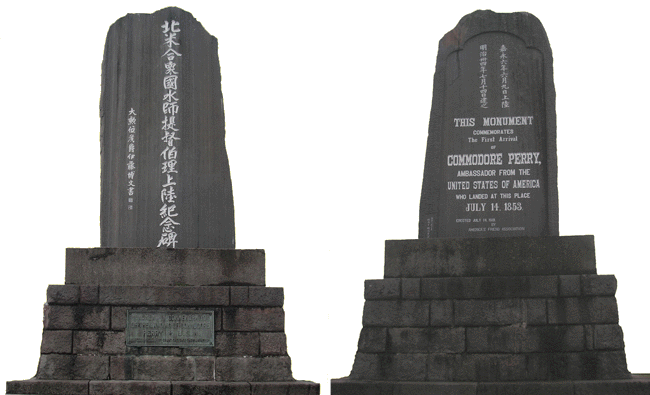
This page discusses the current state of the Matthew C. Perry Memorial that was dedicated on July 14, 1901. The excellent images on this page are courtesy of Rob Oechsle and were taken in December of 2008.
The monument is now the centerpiece of a small seaside park ("Perry Park") in Yokosuka, Japan. The Perry monument was located in Kurihama at the spot where the Americans first landed on July 14, 1853. While the location has not been changed since it was dedicated in 1901, it appears that the Village of Kurihama has been incorporated into the City of Yokosuka. The focal point of the park is the monument. The park also hosts a museum dedicated to Commodore M.C. Perry and the first landing of the Americans.
The parks visitor signboard/guide is below with annotations of key points.
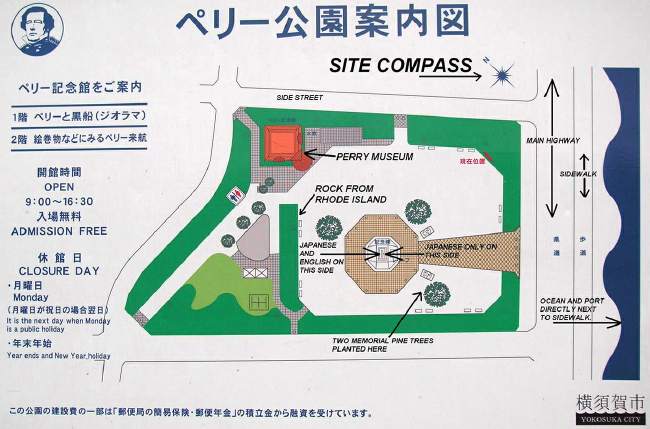
Japanese Only Side of the Monument.
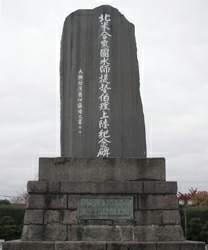 As you face the monument the ocean and Perry Dori (Street) would be to your back. The way the park is currently configured, this is the front of the monument.
As you face the monument the ocean and Perry Dori (Street) would be to your back. The way the park is currently configured, this is the front of the monument.
The characters on this side of the monument have been translated as:
"Monument Commemorating the Landing of Commodore Perry of the United States Navy."
This inscription replicates calligraphy by Marquis Ito Hirobumi.
The plaque placed on the stones below the monument reads:
"Monument in Commemoration of the Landing of Commodore Perry * U.S.N. / Marquis Hirobumi Ito Grand Order of Chrysanthemum."
This plaque was not on the base of the monument when it was dedicated in 1901. Based upon a review of dated photographs of the monument, I believe that it was added between 1913 and 1940.
This is the side of the monument that is seen most frequently in photographs. Photographs of the dedication ceremony show the audience facing this side of the monument and the speakers and honored guests facing out toward the audience.
On the stone landing in front of this side of the monument is a large plaque that is divided into three parts.
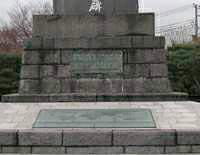
- The top part shows a map with the route of travel of Commodore Perry during the first part of the Japan expedition. It starts in the United States on November 24, 1852 and traces Commodore Perry's route through July 8, 1853.
- The bottom left part of the plaque is in Japanese and recounts Perry's arrival off Kurihama on July 8, 1853, the first landing in Japan on July 14, 1853 to deliver the President's letter and the subsequent Treaty of Peace and Amity. It states the monument was erected by the America's Friend Association and dedicated on July 14, 1901. A close up of this portion of the plaque is here.
- The bottom right part of the plaque is an English translation of the left part of the plaque. The English translation does not, however, give the date (July 14, 1853) of Perry's first landing as found in the Japanese version. A close up of this portion of the plaque is here.
Based upon a review of dated photographs, I believe that this plaque was added to the landing after 1950.
The Bilingual Side of the Monument.
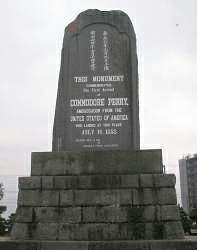 As you face the monument the ocean and Perry Dori would be to your front. The way the park is currently configured, this is the back of the monument. The English inscription reads:
As you face the monument the ocean and Perry Dori would be to your front. The way the park is currently configured, this is the back of the monument. The English inscription reads:
"This Monument / Commemorates / The First Arrival / of / Commodore Perry, / Ambassador from the / United States of America / Who Landed at This Place / July 14, 1853. / Erected July 14, 1901. / By / America's Friend Association."
The Bei-yu Kyo-kai was the Japanese organization that was responsible for establishing the monument. In official documents from the time of the dedication, the American's referred to that organization as the "American Association of Japan." That appears to be a rather imprecise translation of the Japanese as it implies the organization was made up of Americans. The wording on the monument of "America's Friend Association" seems much more appropriate. The Bei-yu Kyo-kai is also sometimes referred to a the "Japanese-American Friendship Society."
The park contains two busts. One of Commodore M.C. Perry and the other of Lord Toda. They are located outside the Perry Museum just to the right and left of the entrance doors.
Additional Key Points of Interest Within the Park.
Perry Museum
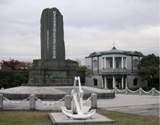
Pine Trees Planted in 1901.
(Perhaps replacements from a later date.)
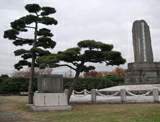
Commemorative Stone from Perry's
Birthplace, Newport, Rhode Island.
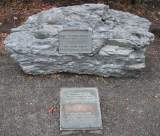
For a current satellite view of the monument and park, click here (web page outside this site).
I would like to again acknowledge and thank Rob Oechsle for the outstanding folio of photographs he has provided. The images on this page are all from Rob's photographs. Rob has captured the monument and monument park as only a professional photographer with a deep understanding of the historical perspective of this important event in Japanese and American relations could. He is the co-author of Great Lew Chew Discovered: 19th Century Ryukyu in Western Art and Illustration (more information here) which presents an amazing representation of 19th Century Western art and illustration pertaining to Lew Chew (Ryukyu Islands). He also is the author of a comprehensive index of Japan related stereoview photographers and publishers during the period of 1859-1912 which is contained in Old Japanese Photographs Collectors' Data Guide by Terry Bennett (more information here). Rob is a foremost expert on the work of T. Enami, the noted Japanese photographer, and shares this expertise on his web site titled "IMAGES OF LOTUS LAND: THE LIFE and CAMERA WORK OF T. ENAMI, JAPAN'S ENIGMATIC PHOTOGRAPHER of the MEIJI and TAISHO ERAS" (T-Enami.org web page).









